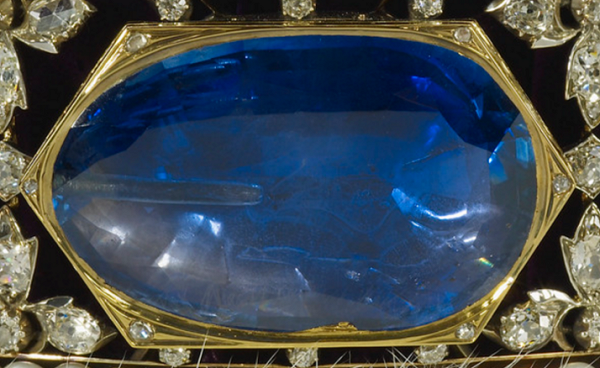 |
| The Stuart Sapphire (Royal Collection) |
Among the numerous glittering gemstones affixed to Britain’s Imperial State Crown, one of the largest is a vivid blue gemstone with a fascinting, muddled history: the Stuart Sapphire.
The sapphire, which weighs in at approximately 104 carats, is currently set at the back of the Imperial State Crown. In their classic book on the British crown jewels, Youngblood and Davenport describe the stone as follows: “oval in shape, about one and a half inches in length, by one inch in breadth, and is set in a gold brooch. It has one or two blemishes, but is of good colour, and was evidently deemed of high value by the Stuarts. At one end has been drilled a hole, probably to introduce some attachment by which the stone could be worn as a pendant.”
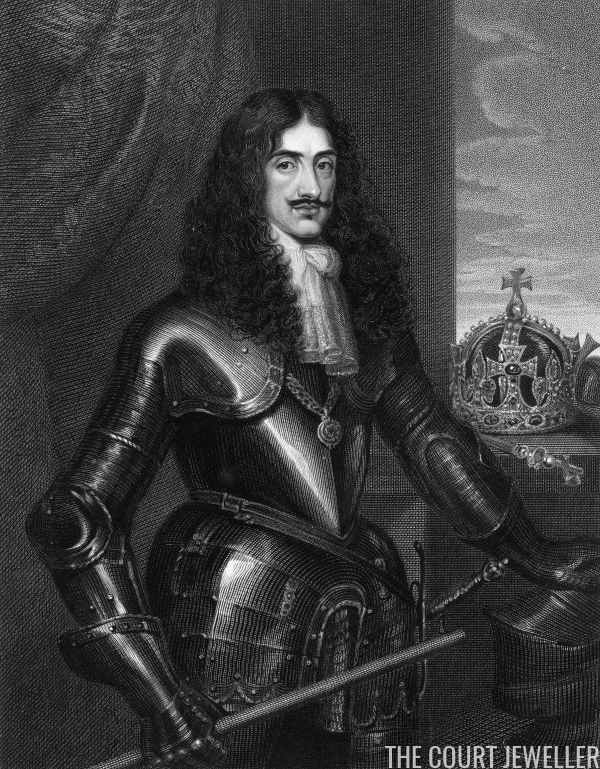 |
| King Charles II poses with royal regalia; the Stuart Sapphire may have been part of the crown jewels during his reign (Hulton Archive/Getty Images) |
The sapphire first pops up in royal legend in the seventeenth century. Many suggest that its first British royal owner was King Charles II — a monarch from the House of Stuart — who ascended to the throne in 1660 after a tumultuous period that included the execution of his father and a decade-long interregnum. Because the crown jewels had largely been broken up and dispersed after the death of King Charles I, the collection had to be recreated during Charles II’s reign, using gemstones that had been reacquired as well as new stones. The sapphire may have been one of the new acquisitions made around that time.
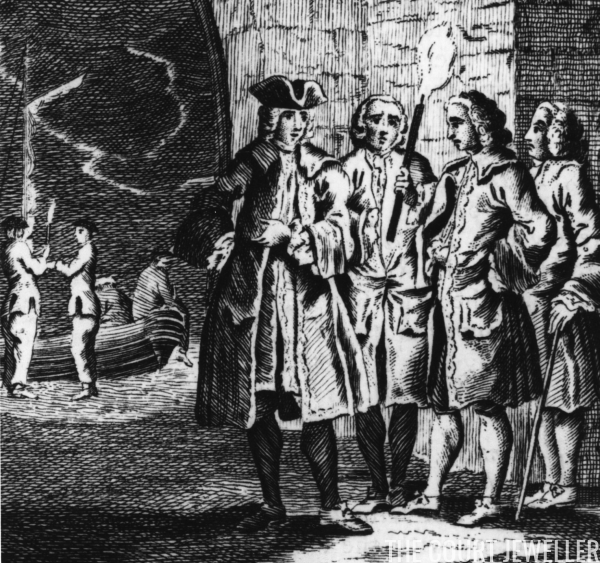 |
| King James II flees to France, possibly with the Stuart Sapphire in tow (Hulton Archive/Getty Images) |
Charles II was succeeded by his younger brother, King James II, who was deposed in the Glorious Revolution of 1688. When he fled to exile in France, James decided to smuggle some of the royal jewels with him, and it’s often said that the sapphire was a part of this cache. The gem supposedly remained in the Jacobite line of the family for two more generations, owned first by James’s son, James Francis Edward Stuart (the “old Pretender”), and then by James’s younger grandson, Henry Benedict Stuart, Cardinal York.
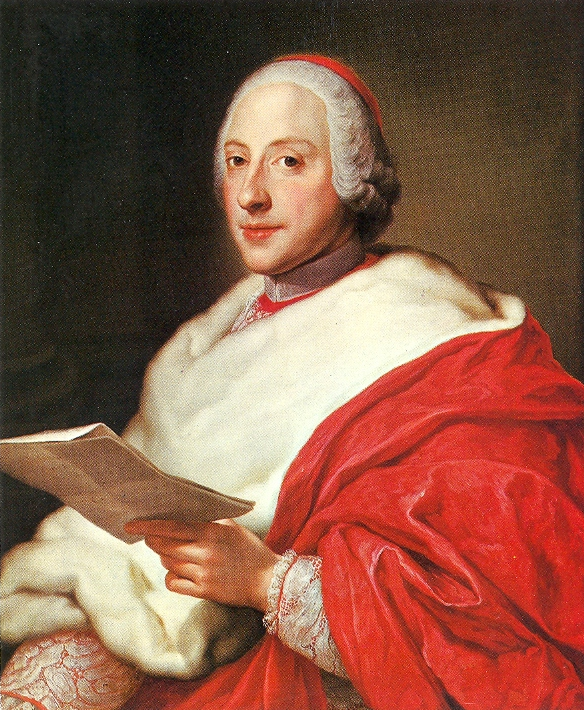 |
| Henry Benedict Stuart, Cardinal York, who supposedly inherited the Stuart Sapphire (Wikimedia Commons) |
Henry, the younger brother of Charles Edward Stuart (better known as “the Young Pretender” and “Bonnie Prince Charlie”), took part in the Jacobite rising of 1745, which attempted to place his elder brother back on the British throne. After the rebellion failed, Henry headed back to Italy, the country where he had been born and raised, and became a Catholic priest under the patronage of Pope Benedict XIV. Thanks to his royal connections, Henry rose quickly within the church’s ranks, eventually becoming Dean of the College of Cardinals. When he died in 1807, he was still in possession of numerous jewels and ornaments that had belonged to his father and grandfather. Untangling exactly what may have happened to the sapphire at that point is a bit tricky.
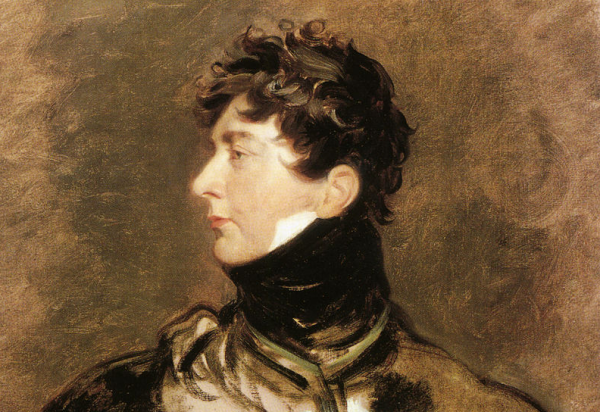 |
| King George IV, who was Prince of Wales when Cardinal York died in 1807 (Wikimedia Commons) |
Youngblood and Davenport claimed that Henry left all of his jewelry, including the sapphire, to King George III — but that doesn’t actually seem to have been the case. In his will, Henry tasked a close friend, Monsignor Angelo Cesarini, with the job of distributing his property. Cesarini sent several jeweled ornaments, including the “Lesser George” supposedly worn by Charles I at his execution, to the Prince of Wales (who later became King George IV). The sapphire, however, was apparently not part of that collection.
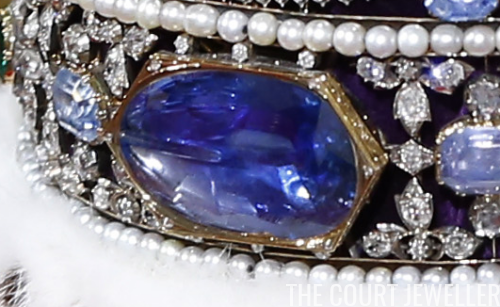 |
| The sapphire purchased by Bonelli is still set in the crown jewels today (Kirsty Wigglesworth – WPA Pool/Getty Images) |
Instead, the Royal Collection notes that George IV employed an Italian dealer named Angioli Bonelli to go to Rome and attempt to collect any remaining Stuart artifacts and papers. Bonelli reportedly encountered a merchant from Venice (I’m not kidding) who showed him the sapphire and claimed that it had a connection to the Stuarts. Bonelli was convinced. He bought the sapphire and brought it to England, presenting it to George IV, who also apparently believed that it was indeed the Stuart Sapphire.
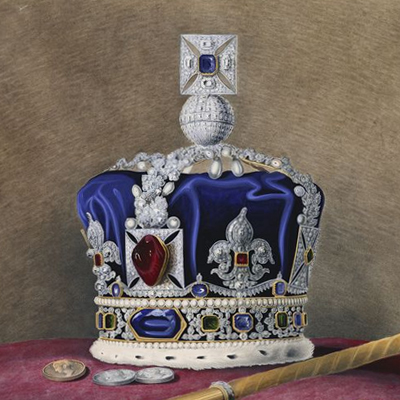 |
| The Stuart Sapphire set in Queen Victoria’s state crown (Wikimedia Commons) |
George IV’s niece, Queen Victoria, was the first monarch to have the sapphire set in her state crown. The current Imperial State Crown is essentially a revised version of Victoria’s; numerous changes to the size of the crown, its frame, and the gems set in it have been made in the ensuing years. During Victoria’s reign, the sapphire was set in an especially prominent place: at the front of the crown, just below the Black Prince’s Ruby.
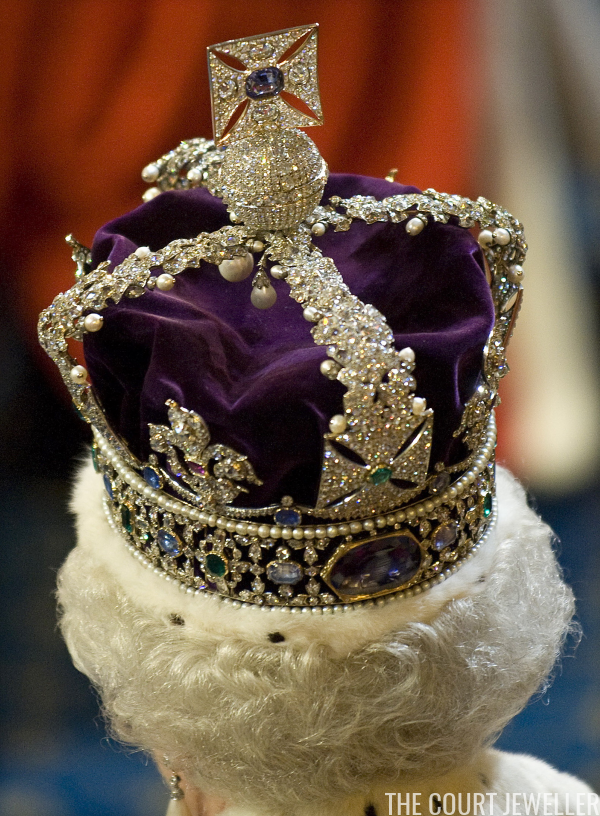 |
| The Stuart Sapphire, set in the Imperial State Crown, is still worn by Queen Elizabeth II (EDDIE MULHOLLAND/AFP/Getty Images) |
After the discovery of the Cullinan Diamond in the early 20th century, however, the sapphire was relocated. The gem was removed from the front of the crown, replaced by the Cullinan II, and set on the opposite side. And that’s where it remains today. Whether the sapphire is really the “Stuart Sapphire” or not, it’s now been part of the crown jewel collection for nearly two centuries, set in one of the only crowns still worn by a modern monarch.
Leave a Reply